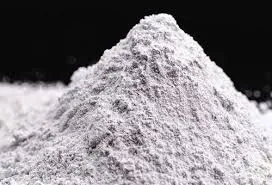
ಸೆಪ್ಟೆಂ . 25, 2024 20:21 Back to list
cellulose ether
The Versatility and Applications of Cellulose Ethers
Cellulose ethers are a group of chemical compounds derived from cellulose, the natural polymer found in the cell walls of plants. These versatile materials retain the structural integrity of cellulose while introducing functional properties that make them invaluable in various industries. Their unique characteristics are derived from the modification of cellulose through the substitution of hydroxyl groups with ether linkages, resulting in compounds such as methylcellulose, hydroxypropyl methylcellulose (HPMC), and carboxymethyl cellulose (CMC).
One of the most significant properties of cellulose ethers is their ability to form viscous solutions when mixed with water. This property ensures that they are widely used as thickening, stabilizing, and emulsifying agents in food products, pharmaceuticals, and cosmetics. In the food industry, for instance, cellulose ethers are incorporated into sauces, dressings, and dairy products to enhance texture and mouthfeel, while also improving the shelf life of these items by preventing separation.
In the pharmaceutical sector, cellulose ethers play a crucial role, especially in the formulation of controlled-release drug systems
. They help regulate the rate at which active pharmaceutical ingredients are released into the body, ensuring prolonged therapeutic effects. Their biocompatibility and non-toxic nature make them particularly attractive for use in various health-related applications, such as wound dressings and gelling agents in ointments.cellulose ether

Moreover, cellulose ethers find extensive use in construction and building materials. Hydroxypropyl methylcellulose, for instance, is added to cement mortars and tile adhesives to improve water retention, workability, and adhesion. These enhancements are essential for the durability and longevity of construction projects. As a binding agent, cellulose ethers can also contribute to the eco-friendliness of construction materials, aligning with contemporary sustainability goals.
The cosmetic industry also benefits from the unique attributes of cellulose ethers. They act as emulsifiers and stabilizers in creams and lotions, ensuring a smooth and appealing product while preventing the separation of oils and water. Their ability to form films on the skin provides additional moisture retention properties, making these compounds essential in skin care formulations.
As the market for cellulose ethers continues to expand, innovative applications are being developed across various fields. Research into modifying the properties of cellulose ethers promises even broader prospects, particularly in biodegradable materials and sustainable products. Overall, the multifunctional nature of cellulose ethers underscores their importance in modern applications, making them crucial components in food, pharmaceuticals, construction, and cosmetics. Their ability to bridge the gap between natural origins and synthetic functionality positions them as indispensable in today's technology-driven world.
-
What Is HPMC: Meaning,Applications
NewsApr.02,2025
-
Redispersible Polymer Powder (Rdp): Uses, Price, And Suppliers
NewsApr.02,2025
-
Hydroxyethyl Cellulose (Hec): Uses, Suppliers, And Buying Guide
NewsApr.02,2025
-
Hpmc (Hydroxypropyl Methylcellulose): Applications, Suppliers, And Buying Guide
NewsApr.02,2025
-
Guide to Mortar Bonding Agent
NewsApr.02,2025
-
Buying Guide to Redispersible Powder
NewsApr.02,2025







